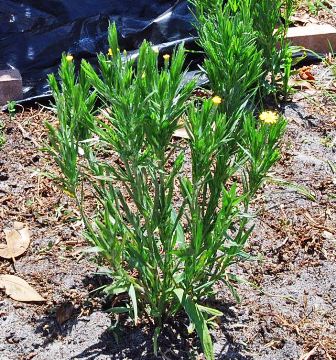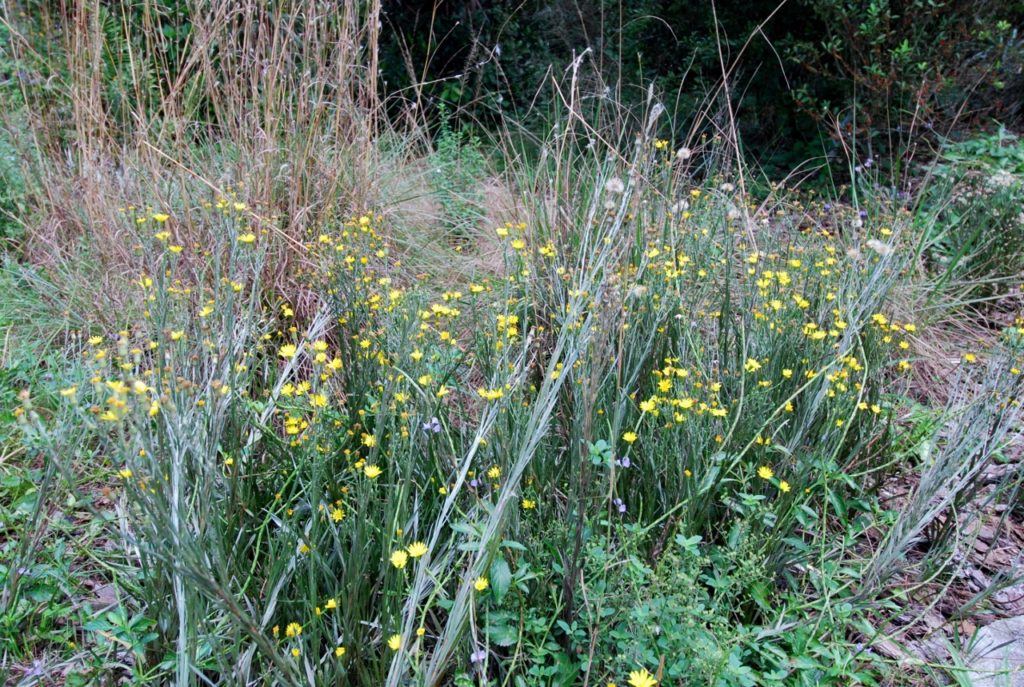

Narrowleaf Silkgrass
Pityopsis graminifolia
Several species of silkgrass are native to dry pinelands, scrub and moist pinelands in Florida and extend up the East Coast to Delaware and west to Texas. Neither drought or cold will harm this plant. The scrub inhabiting, Pityopsis graminifolia var. latifolia, top picture, tends to stay as a clump.
The moist pineland Pityopsis graminifolia var. tracyi, lower picture, suckers and makes moderate sized dense colonies. Both are common in South Florida and are most likely the ones you will find in the wild.
The silvery 12 inch long leaves are one half inch wide and upright. By August small, yellow, butterfly attracting flowers form which ripen into heads of slender seeds. The leaves are eaten by gopher tortoises which are found in these plants’ natural environment.
Both are very drought tolerant plants that last for years. The only care either needs is to cut off the old leaves and flower heads at the end of November. Simply mow or cut with manual hedge trimmers. Few seedlings will come up on their own.
Garden soil can be moist to very dry. Silk grass is naturally mixed with Blazing Star, Partridge Pea, Gopher Apple, Rock Rose, Wire Grass, Cacti, Saw Palmetto and
Scrub Oaks under the canopy of scattered Slash or Sand Pines.
For info about the various species and varieties Click here. See page 13 for a description of Pityopsis graminifolia var. latifolia that is common in scrub habitat of South Florida, and see page 16 for a description of the colony forming Pityopsis graminifolia var. tracyi that is most common in moist pinelands of South Florida.
A mass of tracyi silk grass is impressive if you are following a “silver” theme. I like it as an understory to the various Thatch Palms, Buccaneer Palm, Necklace Pod, Bahama Strongbark, Cinnamon Bark and other plants with a couple of feet of clean trunk.
This makes a great edge to replace Liriope Grass and mixes well with most plants in a wildflower garden. Just give tracyi room to form its lovely colony. The latifolia variety makes nice accents that jump out of the garden. Plant in groups or as singles.